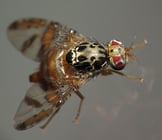 When dieting or eating foods with artificial sweeteners, many people do not get the feeling of being full that they get when eating foods with real sugars. But how can we distinguish between between these two sweeteners, to feel full or not?
When dieting or eating foods with artificial sweeteners, many people do not get the feeling of being full that they get when eating foods with real sugars. But how can we distinguish between between these two sweeteners, to feel full or not?
Research performed at the University of Michigan, Ann Arbor by Monica Dus from the Department of Molecular, Cellular, and Developmental Biology has found a group of neurons in the brain of fruit flies that are able to distinguish between real sugar and artificial sweeteners. This new discovery shows that some organisms are able to distinguish between artificial sweeteners that contain no calories that provide energy and real sugar that does contain calories that provide energy, knowing what to consume that will provide the body with needed energy. (Image courtesy of Wikimedia Commons)
In this study, the researchers kept food away from fruit flies for many hours, making them hungry. The flies were then offered both real sugar and fake sweeteners, to see how they responded to each. It was seen that a group of six neurons in the brain were activated when the fly tasted the real sugar, which sent a hormone to the brain and to the gut, initiating digestion, compared to no reaction when the artificial sweetener was tasted.
Since the real sugar initiated this process within the body, the hungry fruit flies all focused on the real sugar that provided them with the calories and energy they needed.
The human brain has more than 86 billion neurons, compared to that of a fruit fly that has around 100,000. Now that six neurons have been identified in the fruit flies, researchers know the general area to look in the human brain to look for a similar response to sugar and sweeteners, to see if we, too, know the difference between real sugar that provides us with energy, and artificial sweeteners that do nothing for the body.

|
RELATED ARTICLES: |
The University of Michigan is a well-funded, highly regarded life science research institution. Every year, the NIH, NSF, and other public and private donors award millions of dollars to research teams and labs to help fund leading research projects.
The university currently has $198.8 million in active NIH funding. Life science departments at the university receiving substantial amounts of this funding include:
- Medicine and Internal Medicine - $37.2 million
- Pediatrics - $16.1 million
- Pathology - $7.9 million
- Radiation-Diagnostic/Oncology - $8.1 million
- Pharmacology - $6.6 million
Interested in displaying your lab products and technologies to researchers in Ann Arbor?
Participate in the 15th Annual BioResearch Product Faire™ Event at the University of Michigan, Ann Arbor that will be held on Thursday, July 23, 2015. This event gives lab suppliers the opportunity to meet with more than 450 active life science researchers in the Ann Arbor marketplace.
At this event, lab supply companies are able to meet face-to-face with active researchers searching for new products that will benefit their lab work. Display products, demonstrate their function, and give away samples and swag items for these researchers to bring back to their lab.
To learn more about participating in this event, visit the link below:
Researchers in Ann Arbor are encouraged to visit the link below to learn more about attending this complimentary event, and to pre-register to save time at the door:
While in Michigan, consider participating in the 5th Annual BioResearch Product Faire™ Event at Michigan State University, East Lansing on July 22, 2015, the day prior.




